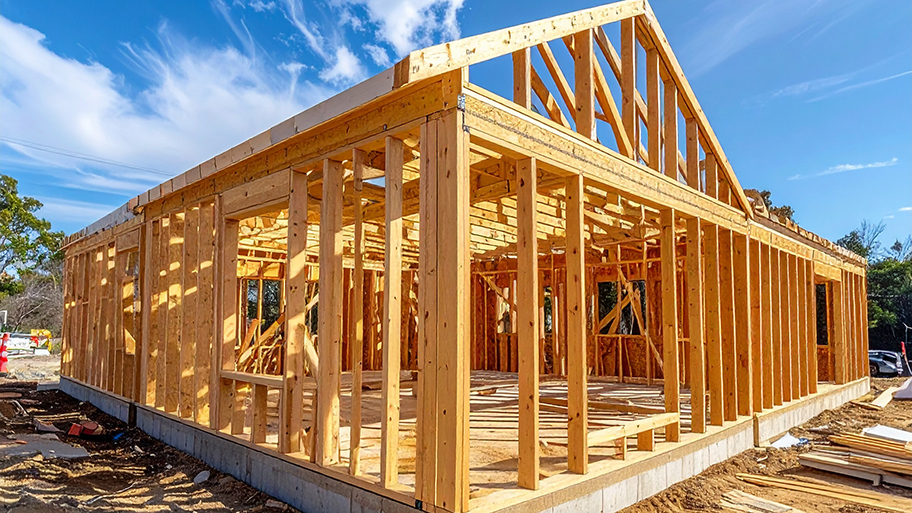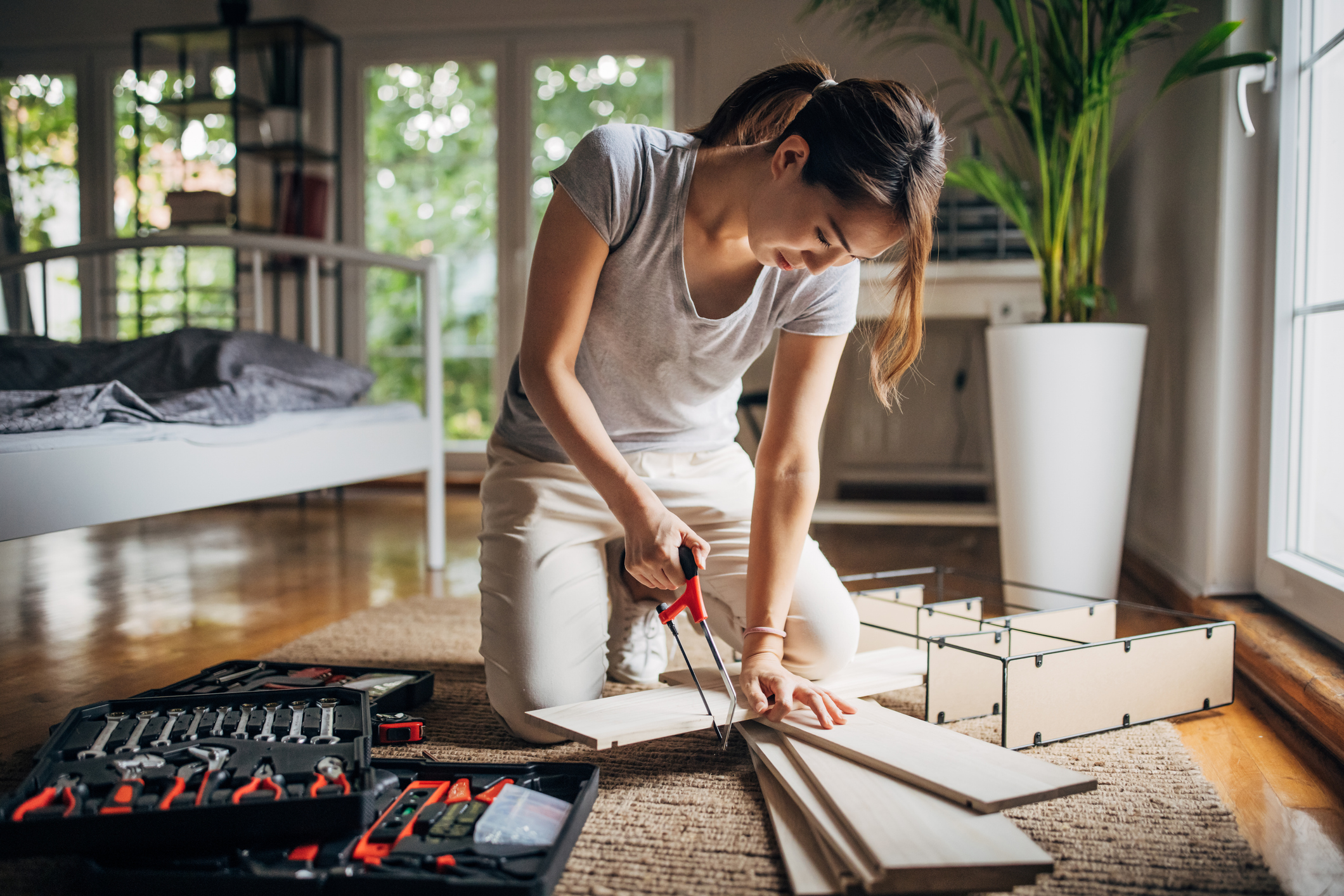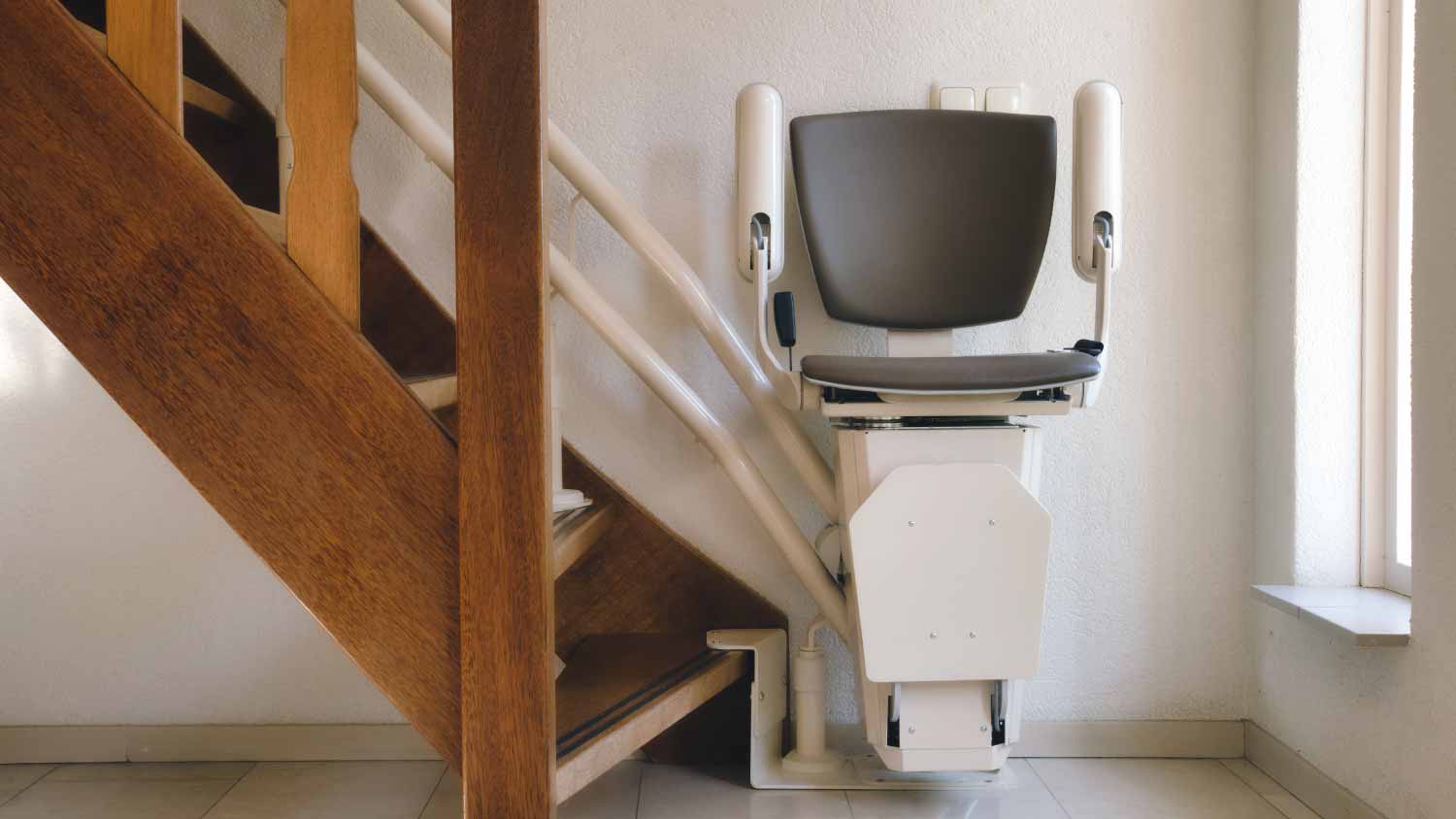
The cost to frame a house can vary depending on the size of your home, the structure you’re building, and your materials. Keep reading to learn how much framing your house might cost.
You don’t need to live in a hot place to turn your home into a desert oasis


The Palm Springs architectural style uses inspiration from mid-century design and the local terrain to create ideal desert escapes.
Some of this style’s most popular features include open floor plans, desert plant life, and natural materials.
There are high and low-cost ways to add this aesthetic to your home, from repainting your walls to breaking them down.
If a weekend at Coachella is at the top of your bucket list, or you’re fresh from watching Florence Pugh and Harry Styles in all the mid-century desert modern design of “Don’t Worry Darling,” you might be wondering how to bring that luxurious Palm Springs essence into your own home. While that may seem improbable, especially for those in colder climates, this design style's core features are easy to incorporate into almost any abode.
Use this guide to understand all the key elements of the Palm Springs architectural style and the high- and low-cost ways you can bring it into your space.
Palm Springs architecture is a mid-century modern design style that emulates Southern California's lush lifestyle and natural surroundings. The homes typically feature a wide, single-floor layout with ample natural light and airflow to accommodate the region's warm weather. It also incorporates sleek, modern interiors, geometric shapes, clean lines, and natural color palettes.
The roots of Palm Springs type of home style go back to the 1940s when mid-century styles like Bauhaus and Art Deco dominated. At the time, many A-listers in Los Angeles—from movie stars to visionary architects and designers—turned to Palm Springs to escape the hustle and bustle of the city and find inspiration in the desert landscape. The resulting architecture honors and emulates the natural terrain while also incorporating elements of modernism that were common at the time.

Palm Springs architecture is coming back because many of its features are perfect for our present tastes, from its emphasis on using natural materials to its reliance on clean lines and minimalist decor. Here are eight elements that made the Palm Springs architectural style stand out back then and allow it to fit perfectly in the 21st century.
Proper ventilation in desert landscapes is critical for keeping things cool. Open floor plans are a must in Palm Springs-inspired homes because they continuously circulate and refresh the air in a space. This design feature also immerses the home and those in it in nature—wherever you are, whether in the kitchen or living room, you can see what’s going on outside, too.
Similar to the Mediterranean home style, this design style sticks almost exclusively to using colors found in the natural terrain in and around Palm Springs. Both building interiors and exteriors are often painted white to mimic the desert’s white sands (this exterior paint color lowers energy costs as well!). Other popular shades primarily consist of neutral earth tones like cacti, palm tree greens, and browns.
But it’s not all about the neutrals: Brighter colors include sky blues, prickly pear pinks, sunset red, yellows, and oranges, though you’ll typically see these shades more sparingly. In general, if you want to channel this style, stick to neutral colors for large elements, like your walls or big pieces of furniture, and use smaller, brightly colored decor to balance things out.
Mid-century modern furniture is a must in Palm Springs architectural style—after all, that’s when the style was invented! That doesn’t mean that every mid-century piece is fair game, though.
This desert-inspired school of design also prioritizes clean lines and minimalism, so your furnishings should match these criteria. For example, many Art Deco pieces are too intricate and won’t feel right in a Palm Springs-style set-up, but a light wood Danish dining table will be right at home.
Though wood flooring isn’t a common feature in the Palm Springs architectural style, wood is used in other small but mighty ways. Generally, this style doesn’t favor any particular material over another, instead opting to use an even mix of different substances to create balance. You’ll never walk into a Palm Springs-inspired home and see only wood. Instead, you’ll find a blend of stone, tile, metal, wood, glass, and everything in between.
When wood is used in Palm Springs architecture, it’s on minor but impactful elements like cabinetry, cupboards, tables, bed frames, and headboards. Wood creates a grounding effect that can make an airy industrial space feel cozy and homey.
Plant life is a considerable feature of Palm Springs architecture, especially the type of greenery in and around the desert terrain, like cacti and palm trees. While your climate may be too cold to maintain these plants outdoors year-round, most warm-weather plants can thrive indoors in perpetuity with proper care.
Everything from snake plants to succulents—many of which are plants that happen to purify the air—are fair game in a Palm Springs-inspired space.
Natural light is essential to the Palm Springs aesthetic. Floor-to-ceiling windows are popular because they allow light to pour in and blur the line between the inside and outside, further immersing the home in nature.
Natural materials are also a common feature of Palm Springs-inspired homes and can include anything from rock feature walls to dried cactus decor.
Palm Springs architecture uses tile and stone flooring almost exclusively because these materials do a better job than wood or carpet of keeping desert homes cool. The particular substance used depends on personal preference, but anything from luxury terrazzo to more industrial concrete flooring is an option with this style.
The Palm Springs architectural style relies on straight, clean lines, unique angles, and geometric shapes to highlight flat desert lands and the peaks of the mountains on the horizon. Homes of this style typically consist of one floor and have a distinct, triangular roof. Many also use breeze blocks to add a bit of brutalism and a unique design flair to front yards and walkways.
There is a reason why Palm Springs homes earned the name of their origin location. And while you can emulate this style when you're renovating or remodeling, there are some highs and lows about the style to know first.
The primary perk of the Palm Springs style is that many of the architectural elements are currently back in fashion. Open floor plans, large windows, and flexible hosting spaces are all ideal for the modern homeowner.
Flexible open floor plans
Floor-to-ceiling windows
Balance and geometric design
Option of many finishes
Ample natural light and airflow
On the other hand, it will take some clever design to cozy up in a Palm Springs-style home in the middle of a Vermont winter. The look will also never please those looking for a more old-world style, such as with Italianate architecture.
Higher home building cost due to unique design
Harder to insulate in cold weather
Often only one floor
Not flexible for many home decor styles
May stand out in some neighborhoods
Requires more square footage for a wide layout

If you’re eager to turn your home into a Palm Springs getaway, the good news is that it’s relatively easy to do. Here are a few ways to channel this iconic desert style:
One quick way to make your home feel more open, airy, and Palm Springs-like is to refresh your walls with a crisp coat of white paint. This is an easy project to do yourself and doesn’t cost a lot, but it has an impact as it does. Seriously committed to the desert aesthetic? Consider taking on the cost of painting your exterior walls white while you’re at it.
You don’t need a lot of furniture or decor to give your home a mid-century look. In fact, just a few key pieces will immediately change your space's aesthetic. Don’t have a big budget for vintage, antique, or modern designer pieces? Local thrift stores are always hiding gems from the ‘60s and ‘70s, but the catch is that they aren’t always intact. Don’t rule out these options, though, because many easy, DIY ways exist to modernize or repair old or damaged furniture.
High ceilings are another feature of the Palm Springs architectural style, but they are not exactly easy to obtain, especially if you’re not building a home from scratch. Fortunately, there are a couple of ways to make your ceiling seem taller without spending a lot or making any significant changes.
For example, hang curtains slightly above window frames or hang long pendant lights to create the illusion of extra height. Painting your ceiling a lighter color will also make it look much taller.
If you don’t mind trying to achieve your Palm Springs dream, get your tools out and prepare to do some demolition. You often only need to break down just one wall to achieve a new and open layout in your home. Make sure to choose a wall that isn’t integral to your home’s structure, enlist a local home remodeling pro to do the work safely, and you’ll feel like you’re living in a completely different building before you know it.
Rock feature walls are common in Palm Springs architecture, but they’re not easy to construct. A low-cost, low-effort alternative is to make an accent wall with a rock-patterned wallpaper. This project will create the same effect without the sometimes pricey materials and heavy-duty installation you would otherwise need.
If your budget is in the mid-range, consider doing something like installing bifold- or accordion-style windows in your space. Doing so will create multiple effects: Your space will feel bigger, have more light, and feel even closer to nature.
Filling your space with warm-weather plants is the quickest and most cost-effective way to make your home feel more like a desert landscape. If you’re new to owning plants, start with ones that won’t need much attention. Fortunately, because rain is so infrequent in the deserts, succulents and cacti only need to be watered every few weeks. They'll thrive if you put them in a nice, bright spot.
From average costs to expert advice, get all the answers you need to get your job done.

The cost to frame a house can vary depending on the size of your home, the structure you’re building, and your materials. Keep reading to learn how much framing your house might cost.

Looking to turn your yard into a hockey or ice skating paradise this winter? Use this backyard ice rink cost guide to see what the installation will total.

Strong floor joists are the key to a structurally safe home. The cost of floor joist repair will often come down to what is causing the problem.

Curved staircase chair lifts can enhance your home’s safety and accessibility. Use this guide to learn how much they cost to install based on factors like staircase size and lift type.

Don’t let your DIY project drain your wallet. Homeowners and professionals share tips on keeping costs down when tackling home improvement projects.

Have stair lift questions? Before installing or replacing a stair lift, discuss these key questions with your contractor to ensure a smooth and safe project.